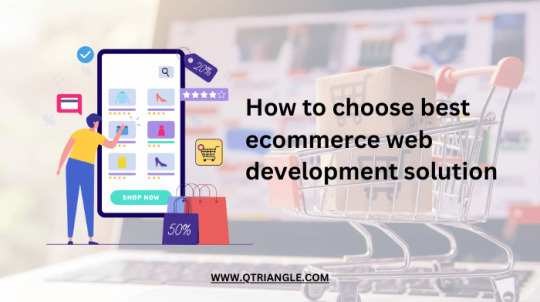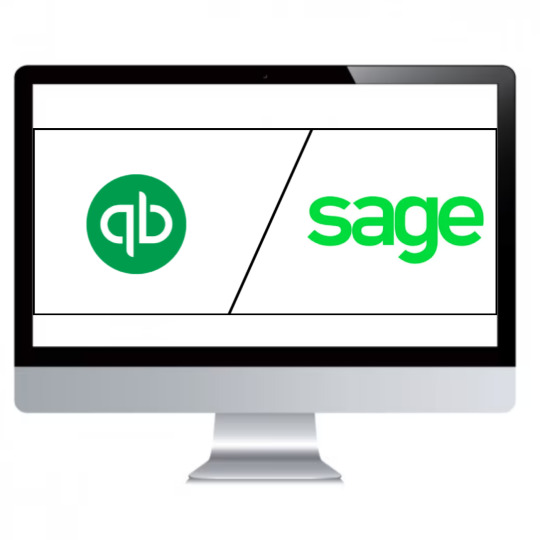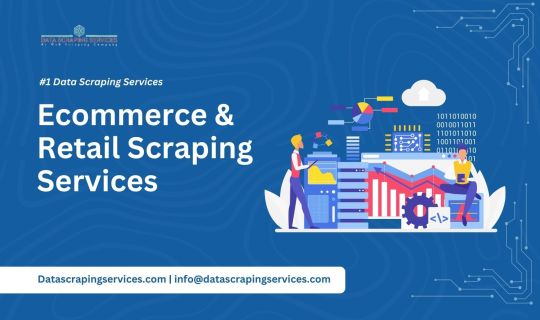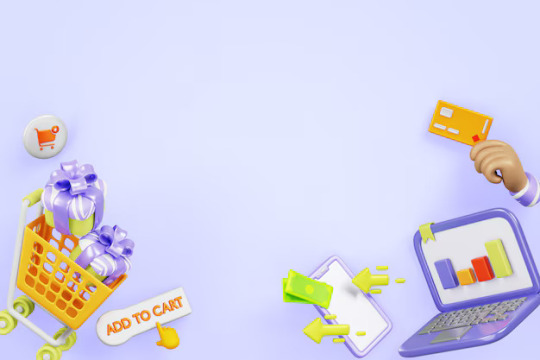#ecommerce platform comparison
Explore tagged Tumblr posts
Text
Best Ecommerce Platforms for Small Business

Searching for the best ecommerce platform for your small business? Our comprehensive guide explores top-rated options, evaluating features, scalability, and pricing to help you make an informed choice. Whether you're starting fresh or considering a switch, find the ideal platform to boost your online presence and sales. Dive into our expert recommendations and streamline your path to ecommerce success today!
Read More
#small business tools#ecommerce platforms#online store solutions#ecommerce software#business website platforms#small business ecommerce#ecommerce platform comparison#ecommerce for startups#ecommerce platform reviews
0 notes
Text
A Comprehensive Guide to E-commerce Solutions
In today's digital age, the e-commerce landscape is flourishing, offering businesses of all sizes unparalleled opportunities for growth and profitability. Whether you're a startup venturing into online sales or an established brand looking to enhance your e-commerce strategy, the right e-commerce solution can be your key to success.
The E-commerce Revolution
The rapid growth of e-commerce has transformed the way consumers shop and businesses operate. With the convenience of online shopping and the global reach of the internet, it's no surprise that e-commerce is a thriving industry. According to Statista, global e-commerce sales reached $4.28 trillion in 2020, and this figure is expected to grow significantly in the coming years.
To thrive in this competitive landscape, businesses must harness the power of e-commerce solutions that cater to their unique needs. These solutions encompass a wide range of technologies and tools designed to streamline online operations, attract customers, and boost sales. In this comprehensive guide, we'll explore the various facets of e-commerce solutions, helping you make informed decisions for your online business.
Choosing the Right E-commerce Platform
At the heart of any e-commerce venture is the choice of an e-commerce platform. This decision will influence the overall functionality, appearance, and scalability of your online store. Some of the popular e-commerce platforms include Shopify, WooCommerce, Magento, BigCommerce, and Volusion, each with its own set of features and benefits.
When selecting a platform, consider factors such as ease of use, customization options, payment gateway integrations, and scalability. Additionally, assess your budget and long-term goals to ensure the platform aligns with your business strategy.
Designing Your Online Store
Your e-commerce website serves as your digital storefront, making a powerful first impression on potential customers. A well-designed website should be visually appealing, easy to navigate, and responsive on various devices. Many e-commerce platforms offer customizable templates and themes to simplify the design process.
Pay attention to your brand's identity, incorporating your logo, color scheme, and product imagery consistently throughout the site. User experience (UX) and user interface (UI) design principles should guide the layout and organization of your online store.
Managing Products and Inventory
Efficient product management is vital for e-commerce success. You need to organize and display your products effectively, including high-quality images, detailed descriptions, and pricing information. Many platforms offer tools to manage product variants, track inventory levels, and automate restocking processes.
Regularly update your product listings to keep them accurate and appealing to customers. Consider implementing a product review system to build trust and provide valuable information to shoppers.
Shopping Cart and Checkout Experience
A seamless shopping cart and checkout process are essential for minimizing cart abandonment rates and ensuring a smooth customer journey. Implement a user-friendly shopping cart that allows customers to easily add, remove, or modify items. The checkout process should be intuitive, with clear steps and minimal friction.
Security is paramount during transactions. Employ SSL encryption to protect sensitive customer data, and provide multiple payment options, including credit/debit cards, digital wallets, and alternative payment methods.
Payment Processing and Security
Selecting a reliable payment gateway is a critical aspect of e-commerce solutions. Consider factors such as transaction fees, international support, and the ease of integration. Leading payment gateway providers like Stripe, PayPal, Square, and Authorize.net offer secure and efficient payment processing solutions.
To ensure the security of customer information, adhere to Payment Card Industry Data Security Standard (PCI DSS) compliance requirements. Regularly update your security protocols and educate your team on best practices to prevent data breaches and fraud.
Shipping and Fulfillment
Effective management of shipping options and order fulfillment is crucial for delivering a satisfying customer experience. Utilize shipping calculators to determine accurate shipping costs, and integrate your e-commerce platform with shipping carriers like UPS, FedEx, and USPS for streamlined label generation and package tracking.
Consider offering multiple shipping methods, including express and international options, to accommodate different customer preferences. Communicate estimated delivery times clearly to manage customer expectations.
Inventory Management and Reordering
Maintaining optimal inventory levels is a delicate balance. Implement inventory management systems that provide real-time visibility into stock levels and automatically trigger reorder alerts when inventory reaches specified thresholds. This ensures you can fulfill customer orders promptly and minimize stockouts.
Customer Support and Returns
Exceptional customer support is a cornerstone of successful e-commerce. Provide various channels for customers to reach out, such as live chat, email, and phone support. An informative and transparent return policy builds trust and encourages repeat business.
Efficiently process returns and refunds to maintain customer satisfaction. Use return data to identify product issues and improve your offerings over time.
SEO and Marketing Strategies
To drive traffic to your e-commerce store, employ effective search engine optimization (SEO) techniques. Optimize product descriptions, meta tags, and URLs to improve your website's visibility in search engine results. Regularly update your website with fresh, high-quality content to engage visitors and enhance SEO.
Incorporate digital marketing strategies, such as email marketing, social media promotion, and pay-per-click advertising, to attract and retain customers. Leverage data analytics to measure the effectiveness of your marketing campaigns and make data-driven decisions.
Analytics and Reporting
Data is a valuable asset in e-commerce. Utilize analytics tools to track website traffic, customer behavior, and sales performance. Monitor key performance indicators (KPIs) such as conversion rates, average order value, and customer lifetime value to assess your e-commerce store's health.
Detailed reporting helps you identify trends, make informed decisions, and refine your business strategy. Regularly review and adjust your e-commerce approach based on these insights.
Scalability and Future Growth
As your business expands, your e-commerce solution should scale with you. Ensure that your chosen platform and infrastructure can handle increased traffic and product offerings without compromising performance. Regularly update your technology stack to leverage the latest innovations and stay competitive.
Legal Compliance and Data Security
E-commerce businesses must comply with legal regulations, such as data protection laws (e.g., GDPR), tax laws, and consumer protection regulations. Stay informed about these requirements and implement necessary measures to safeguard customer data and ensure legal compliance.
Conclusion
In the ever-evolving world of e-commerce, selecting and implementing the right e-commerce solutions is a critical step toward achieving sustainable growth and success. By carefully considering the factors discussed in this guide and staying informed about industry trends, you can build and maintain a thriving online store that meets the needs of your customers and drives your business forward.
Remember that the e-commerce landscape is dynamic, so ongoing optimization and adaptation are key to staying competitive and seizing new opportunities. Continuously assess your e-commerce strategy, embrace innovation, and prioritize the customer experience to unlock the full potential of your online business.
#ecommerce platforms#online store solutions#ecommerce software#ecommerce website builder#ecommerce platform comparison#best ecommerce solutions#ecommerce website development
1 note
·
View note
Text
The Ultimate Guide to Ecommerce Development: Tips, Trends, and Best Practices
#Ecommerce platform comparison#Best Ecommerce solutions#Ecommerce development tips#Ecommerce website design trends#Ecommerce website optimization#Custom Ecommerce development#Ecommerce website security#Mobile Ecommerce development#Ecommerce development services#Ecommerce plugin development#Ecommerce UX design#Ecommerce payment gateways#Ecommerce SEO strategies#Ecommerce analytics tools#Ecommerce CMS platforms#Ecommerce website migration#Ecommerce API integration#Ecommerce website performance#Ecommerce conversion rate optimization#pool
1 note
·
View note
Text

Choosing the best eCommerce web development solution involves assessing your business needs, evaluating the expertise of potential providers, and ensuring compatibility with your goals. QTriangle stands out by offering tailored, scalable solutions that blend cutting-edge technology with exceptional design and usability. With our extensive experience and commitment to quality, we deliver comprehensive support and innovative eCommerce platforms that drive growth and enhance customer experiences. Partner with QTriangle to elevate your online presence and achieve lasting success in the digital marketplace.
#Choosing eCommerce Solutions#Best eCommerce Development#Web Development Solutions#eCommerce Platform Selection#Development Best Practices#eCommerce Platforms#Solution Comparison#Website Development#Choosing a Platform#Development Tools#eCommerce Strategy#Online Store Solutions#Platform Features#Web Development Tips#Solution Evaluation
0 notes
Text
Shopify vs BigCommerce vs Magento vs WooCommerce: Which is Best for Your Online Store in 2024
Choosing the right e-commerce platform is crucial for your business’s success. In this comparison of Shopify vs BigCommerce vs Magento vs WooCommerce, we’ll explore their features, ease of use, pricing, and more to help you find the best fit for your online store in 2024. In the fast-paced world of e-commerce, where every click can lead to a sale, picking the right platform for your online store…

View On WordPress
0 notes
Text
Discover the perfect e-commerce solution with Shopify vs WooCommerce dropshipping. Explore the benefits, costs, and customization options. For expert Shopify dropshipping store development services, trust Webgarh Solutions to elevate your online business with tailored solutions and skilled developers.
#shopify dropshipping store#hire shopify dropshipping developer#custom dropshipping store#webgarh solutions#shopify vs woocommerce#dropshipping comparison#ecommerce platform#shopify development#woocommerce customization#web development#ecommerce solutions#custom dropshipping#webgarh experts
0 notes
Text
Shopify vs. Wix in 2024: Customization, Flexibility, and Growth Potential
🚀 Shopify vs. Wix in 2024: Which e-commerce platform is right for your business? From customization and flexibility to growth potential, we break it all down for you! 📈 Discover the winner in our latest comparison. 💡 #Ecommerce #Shopify #Wix #BusinessG
In today’s dynamic e-commerce landscape, selecting the right platform is crucial for your business’s success. Shopify and Wix are two of the most popular choices, each bringing its unique strengths to the table. But as we move into 2024, how do they stack up in terms of customization, flexibility, and growth potential? In this blog post, we’ll dive deep into these three key areas to help you…
#business scalability#e-commerce growth#e-commerce platforms#online store customization#Shopify 2024#Shopify vs Wix#Shopify vs Wix comparison.#Wix 2024
3 notes
·
View notes
Text
Magento vs shopify: Which one is more powerful for eCommerce?
When comparing Magento and Shopify, each platform has its own strengths and weaknesses, and the best choice depends on your specific needs and goals. Here’s a detailed comparison:
Magento
Pros:
Flexibility and Customization: Magento offers extensive customization options and flexibility. It's an open-source platform, meaning you can modify the code to suit your specific needs.
Scalability: Magento is highly scalable and is ideal for large businesses with complex e-commerce needs and high volumes of traffic.
Advanced Features: It has a wide range of built-in features and supports complex product catalogs and integrations.
Cons:
Complexity: Magento can be complex to set up and manage, often requiring a developer's expertise for customization and maintenance.
Cost: Magento can be costly, especially the Magento Commerce version, which requires significant investment in development and hosting.
Shopify
Pros:
Ease of Use: Shopify is known for its user-friendly interface and ease of setup. It is designed for users who may not have technical skills, making it ideal for small to medium-sized businesses.
Cost-Effective: Shopify offers various pricing plans, with the first month available for just $1. This makes it a cost-effective option for starting an online store.
Built-In Features: Shopify provides built-in features and apps that cover most e-commerce needs, from product management to marketing and analytics.
24/7 Support: Shopify offers 24/7 customer support, helping you resolve any issues quickly.
Secure and Reliable: Shopify is known for its robust security features and reliability, ensuring that your store runs smoothly and securely.
Why Shopify Might Be the Better Choice
Simplicity and Speed: Shopify’s ease of use and quick setup make it a great choice for those who want to launch a store quickly and without much hassle.
Affordability: With the first month available for just $1, Shopify provides an affordable entry point to start an e-commerce business.
Scalability: While Shopify may not be as customizable as Magento, it scales well with business growth, offering plans that can accommodate increasing traffic and sales.
Potential to Make Money
Shopify’s user-friendly platform and built-in features make it easier to manage and grow your e-commerce business. By leveraging Shopify’s marketing tools and customer support, you can effectively drive sales and increase your revenue. The initial $1 offer allows you to test the platform’s capabilities and start building your business with minimal upfront cost.
Create your online store today with Shopify
If you’re looking for an e-commerce platform that is easy to use, cost-effective and offers robust support, Shopify is a great choice. Take advantage of the $1 offer for the first month to explore Shopify’s features and start your online store. This will help you assess whether Shopify meets your needs and allow you to start making money from your e-commerce venture with minimal risk.
2 notes
·
View notes
Text
Ecommerce Platform with Customer Reviews and Ratings: Revolutionizing Online Shopping
The rise of ecommerce has transformed the way we shop, offering convenience and accessibility like never before. In recent years, the integration of customer reviews and ratings on ecommerce platforms has further enhanced the online shopping experience. These valuable insights provided by fellow consumers have revolutionized the way we make purchasing decisions, creating a more informed and empowered customer base.
The Power of Customer Reviews
Customer reviews act as a digital word-of-mouth, allowing shoppers to gain real-world perspectives on products and services. By reading reviews, potential buyers can evaluate the quality, functionality, and overall satisfaction levels associated with a particular item or brand.
One of the greatest advantages of customer reviews is their authenticity. Unlike traditional advertising or promotional materials, reviews are typically unbiased and genuine. Consumers share their honest experiences, providing valuable feedback that helps others make well-informed decisions. This transparency fosters trust between buyers and sellers, strengthening the overall credibility of the ecommerce platform.
Ratings: Simplifying Decision-Making
Accompanying customer reviews, ratings offer a quick and easy way to gauge the popularity and quality of a product. By assigning a numerical or star rating, customers provide a summary of their satisfaction level, simplifying the decision-making process for potential buyers.
These ratings allow shoppers to quickly identify the most highly regarded products within a specific category, saving time and effort in the search for the perfect purchase. Whether it's a five-star rating for a popular electronic gadget or a high rating for outstanding customer service, the simplicity of ratings empowers consumers to make efficient and confident choices.
Benefits for Consumers
The inclusion of customer reviews and ratings on ecommerce platforms offers several benefits to consumers:
Increased Confidence: Reading positive reviews and high ratings instills confidence in buyers, assuring them that they are making a wise purchase.
Reduced Risk: By learning from the experiences of others, consumers can mitigate the risks associated with buying unknown or untested products.
Product Comparisons: Reviews allow shoppers to compare similar products, enabling them to select the one that best fits their needs and preferences.
Improved Satisfaction: Customers can provide feedback to sellers, leading to improvements in product quality, customer service, and overall user experience.
Benefits for Sellers
Ecommerce platforms that incorporate customer reviews and ratings also benefit sellers:
Increased Trust: Positive reviews and high ratings build trust between sellers and potential buyers, enhancing the reputation of the brand.
Competitive Edge: Positive feedback and high ratings differentiate a seller from competitors, attracting more customers and driving sales.
Market Research: Sellers can gain valuable insights into customer preferences, allowing them to tailor their offerings to meet market demands.
Engagement and Loyalty: Encouraging customers to leave reviews fosters engagement and loyalty, as buyers feel valued and connected to the brand.
The Future of Ecommerce Platforms
As the ecommerce industry continues to evolve, customer reviews and ratings will play an increasingly vital role. Advancements in technology, such as artificial intelligence and machine learning, will further enhance the accuracy and relevance of these reviews.
In the future, we can expect ecommerce platforms to leverage customer reviews and ratings in innovative ways. Personalized recommendations based on individual preferences, sentiment analysis to extract deeper insights from reviews, and interactive features that allow customers to engage directly with reviewers are just a few possibilities on the horizon.
Ultimately, the integration of customer reviews and ratings in ecommerce platforms has transformed online shopping into a more reliable, efficient, and customer-centric experience. By harnessing the collective wisdom of the online community, consumers can make well-informed decisions, while sellers can build trust and drive sales. With the continuous advancements in technology, the future of ecommerce platforms is bright, promising even more exciting developments to come.
Click here to contact me on Fiverr
Source
3 notes
·
View notes
Text
QuickBooks vs Sage: A Comprehensive Comparison for Small Businesses
Introduction
As a small business owner, choosing the right accounting software can be a daunting task. With so many options out there, it's hard to know which one is the best fit for your needs. Two of the most popular options on the market are QuickBooks and Sage. But how do they compare?

In this QuickBooks vs Sage comprehensive comparison, we'll take a look at both QuickBooks and Sage's features, pricing, pros and cons to help you make an informed decision about which software is right for your small business. So let's dive in!
QuickBooks Overview
QuickBooks is one of the most popular accounting software solutions for small businesses. It was developed and marketed by Intuit, a company that specializes in financial and tax preparation software. QuickBooks is known for its user-friendly interface and extensive features that cater to various business needs.
One of the key benefits of using QuickBooks is its ease of use. The software can be easily installed on your computer or accessed through the cloud-based version, making it accessible anytime, anywhere. Additionally, QuickBooks has a simple dashboard that allows users to track their expenses, income, and profits with just a few clicks.
Another great feature of QuickBooks is its ability to integrate with other applications such as PayPal and Square. This integration makes it easier for businesses to manage their finances without having to switch between multiple platforms.
Moreover, QuickBooks offers several versions tailored to suit different types of businesses including self-employed individuals, small business owners and accountants who work with multiple clients at once. These versions come with varying features such as invoicing capabilities, inventory management tools among others.
If you are looking for an accounting solution that offers easy accessibility combined with extensive functionality then QuickBooks could be the perfect fit for you.
Sage Overview
Sage is another popular accounting software that caters to small and medium-sized businesses. It offers a variety of features that help in managing finances, invoicing customers, and tracking expenses.
One of the key advantages of Sage is its flexibility. It provides users with various customization options to tailor the software's interface according to their needs and preferences. Additionally, it has an intuitive dashboard that displays all important financial information at a glance.
Apart from standard accounting functionalities like bookkeeping and bank reconciliation, Sage also offers advanced inventory management features such as order fulfillment tracking and automated reordering.
Another notable aspect of Sage is its integration capability with other business tools like Microsoft Office 365, Salesforce CRM, and Shopify eCommerce platform. This allows for seamless data exchange between different software applications used by businesses.
Sage is a robust accounting solution suitable for businesses looking for advanced features beyond basic bookkeeping. Its customizable interface and integration capabilities make it stand out among competitors in the market.
QuickBooks vs Sage Feature Comparison
When it comes to comparing QuickBooks vs Sage, one of the most important things to look at is their features. Both software solutions offer a range of tools and functions that can help small businesses manage their finances effectively.
QuickBooks has always been known for its strong focus on accounting features. It offers a comprehensive suite of tools designed to handle everything from invoicing and billing to expense tracking and payroll management. In addition, QuickBooks also provides robust reporting capabilities that enable business owners to get insight into the financial health of their company in real-time.
On the other hand, Sage boasts an impressive array of specialized features that cater specifically to certain industries such as construction, manufacturing, or distribution. These industry-specific functionalities allow businesses operating in these sectors to streamline operations by automating tasks like inventory tracking or job costing.
While both platforms have plenty of useful features for small businesses, it's important to consider which ones are more relevant based on your specific needs. Take some time to evaluate your business requirements before making a decision between QuickBooks vs Sage.
QuickBooks vs Sage Pricing Comparison
When it comes to pricing, both QuickBooks and Sage offer a range of plans that cater to different business needs and budgets. However, there are some notable differences between the two.
QuickBooks offers four main pricing plans: Simple Start, Essentials, Plus, and Advanced. Prices start at $25 per month for Simple Start and go up to $180 per month for Advanced. Each plan includes features like invoicing, expense tracking, and basic reporting tools.
On the other hand, Sage has three main pricing tiers: Accounting Start ($10/month), Accounting ($25/month), and Accounting Premium ($71.67/month). While these prices may seem lower than QuickBooks' offerings on the surface level, it's important to note that each tier is limited in terms of features compared to what QuickBooks offers.
Additionally, both QuickBooks and Sage offer add-ons such as payroll processing or inventory management for an additional cost. It's important for businesses to carefully consider their needs when deciding which plan is right for them.
Ultimately, while there are differences in price between the two platforms depending on your business size and needs; finding out which one works best will depend entirely upon your specific budgeting goals as well as overall objectives
Pros and Cons
When comparing QuickBooks and Sage, it's important to consider the pros and cons of each software. First, let's take a look at some of the advantages of using QuickBooks.
One of the major benefits of QuickBooks is its user-friendly interface. Even if you are not an accounting expert, you can easily navigate through this software. It has a simple dashboard that provides a clear overview of your financial records. Also, it offers robust features such as invoicing, expense tracking and payroll management.
On the other hand, Sage also has its own set of pros. One advantage is its customization capability which allows users to tailor-fit their accounting processes based on their business needs. Additionally, Sage enables multi-user access which supports collaboration among team members in real-time.
However, there are also some cons to consider for both software options. For example, QuickBooks may be too basic for larger businesses with more complex accounting requirements while Sage may have a steeper learning curve compared to other accounting platforms.
Ultimately, deciding between QuickBooks or Sage will depend on your business size and specific needs when it comes to bookkeeping and accounting processes.
Conclusion
After weighing the advantages and disadvantages of QuickBooks vs Sage, it is evident that both software programs have their unique features and benefits. Ultimately, the choice between them depends on a business's specific needs.
QuickBooks is an excellent choice for small businesses looking for easy-to-use bookkeeping software with robust accounting features, mobile accessibility, and affordable pricing options. On the other hand, Sage offers more extensive customization options and advanced reporting capabilities.
Before making any decision about which bookkeeping software to use in your business, you should conduct thorough research into each program's features. However, regardless of which option you choose; investing in either QuickBooks or Sage will give your small business a competitive edge when it comes to managing finances effectively.
3 notes
·
View notes
Text
Which is the best way to Migrate product data in E-commerce Websites?
Ecommerce websites have been developing every year to push the website's growth and higher product sales. It can be a complex process to migrate product data on the eCommerce website as it takes lots of time and proper planning. However, it is important to switch the data to different E-commerce platform as in B2B sales; it is very necessary to return the sales of products. There can be multiple reasons why your current E-commerce website is not functioning properly, so you need another new platform to migrate product data.
Therefore, transferring data to another eCommerce website is not a simple process. You need to consider some of the important steps to help you migrate product data information and raise the overall growth of the website.

What do you understand about E-commerce Migration?
When your website or domain is not functioning properly? When you feel your site is taking too long to load any product or switch to any category. That means it's time to say goodbye to your ecommerce website and create a new stable E-Commerce website.
Transferring your previous website's data to a new E-commerce website is called E-Commerce migration. It completely depends on the owner if they want to transfer complete or personalized data to a new website. It is also helpful that you can cut off that item from the list if you have bad sales of any product on a previous website. It reduces your bad reviews, and you can focus on the most popular product on the website.
Measure to consider while E-commerce store migrating Data.
There is a list of important and necessary measures to consider while migrating data.
● Analyzing Problems with older e-commerce Websites.
Identifying the problem you are facing in the old ecommerce website is necessary so it won't carry on to the new eCommerce domain. Also, make an analyzing list where you can mark the product's overall sales and growth in the past few years. It will help you target your new website more on products with good sales and opt out of good customer reviews.
If your old ecommerce website is having too much trouble loading or having multiple errors, then you should not migrate ecommerce product data directly. In this process, you can nullify the errors and drawbacks of your older website.
● Ecommerce Migration Tools
Many ecommerce migration tools nowadays available and can help you migrate your data quickly without the hassle of work. When you utilize any migration tool to transfer data to an eCommerce website, you should consider some factors before shifting your product.
Migration tools allow users to select multiple products and shift to the new website. Therefore you need to identify if there is any data which is not valid for the new website. You should not consider migrating it to the new domain. Ecommerce Migration tools are useful, but it would be great to customize your requirement and migrate particular data to the new website.
● Terminating Errors
When migrating your data to the new eCommerce website, you should consider checking any relevant information regarding the product. It is necessary to terminate all the duplicate and unnecessary product data information that is slowing the speed of websites.
Additionally, you can select the necessary data to migrate and add new products to the website, improving the customer experience on your platform.
● Staging the Live Site
Site staging allows the user to compare the process working on the live site. It is helpful in various cases to make any changes before uploading your website globally. By Staging the site, you can also fix multiple errors that might occur during site performance.
Although it is not a very big process, it is crucial because it reduces the possibility of getting into trouble when you launch your website.
● Data Mapping
Data Mapping is the process that involves the comparison between the two websites where users can check that all the products are migrated to the proper location. It is useful to ensure that all the products are completely migrated to your new platform and that there is no misplacing of any information and product.
● Final Analysis
Once the ecommerce migration process is complete, it would be best to check that all the data is transferred properly. Also, ensure that if there is any error or leg in the new E-commerce website, you can fix it in further process. This is a major step as it reduces the negative impact of the website on the customers and increases the overall quality of the domain.
Why is Migration data necessary?
Due to multiple factors, it becomes important to migrate the data from older e-commerce websites to new websites. Sometimes the website is not properly working and takes too much time while loading. It decreases the customer's interest in the website as all they get is a loading page.
Another important reason to migrate the product data is to customize your previous website and formulate the necessary data for a new website. In this situation, you can pick the necessary and most selling items to the new domain and promote another new product on the new website. It is the best way of terminating the weak products from your website and getting more customer interest.
In the end, it is a very difficult and complex process to fix the older website. So it will be good for the users to create a new website and migrate the necessary data to a newer one.
Conclusion
Migrating the data to the new E-commerce website is very complex, but now you can easily migrate data considering the important factors. Following every measure required to transfer the data to a new eCommerce website is necessary.
By considering these measures, you can reduce the possibility of unnecessary errors and irrelevant data mismatching. Moreover, you can also upload accurate product information on the new website by creating valid details. Hope this information can improve the quality of a ecommerce migration process and product reach to global customers.
For more details about ecommerce migration services, visit Intellect Outsource
4 notes
·
View notes
Text
How Facebook Ads Work

How Facebook Ads Work: A Complete Guide for Business Owners
Facebook Ad have become one of the most effective digital marketing tools for businesses looking to grow online. Whether you want to increase website traffic, generate leads, or boost sales, Facebook Ad can help you reach your target audience effectively. In this guide, we will explain how Facebook Ads work and how you can use them to maximize your business growth.
What Are FacebookAds?
Meta ads are paid advertisements that appear on Facebook and its partner platforms like Instagram, Messenger, and Audience Network. These ads are highly customizable, allowing businesses to target specific demographics, interests, and behaviors.
Benefits of FacebookAds
Facebook Ad offer several advantages that make them a powerful tool for businesses:
Wide Reach: Facebook has over 3 billion active users, making it one of the largest advertising platforms.
Precise Targeting: You can target users based on location, age, gender, interests, and online behavior.
Cost-Effective: You can set your own budget and optimize ads for better results.
Retargeting Opportunities: Reach users who have previously interacted with your business.
Multiple Ad Formats: Use images, videos, carousels, and more to engage your audience.

How Do Facebook Ads Work?
Facebook Ad work through a bidding system where advertisers compete to show their ads to the most relevant audience. The process includes:
Choosing an Objective: Decide whether you want more website traffic, engagement, or conversions.
Defining Your Audience: Use targeting options like demographics, interests, and behaviors.
Selecting Ad Placement: Choose where your ads will appear (Facebook Feed, Stories, Instagram, Messenger, etc.).
Setting a Budget: Decide how much you want to spend daily or over the campaign duration.
Creating the Ad: Upload your ad creative (image, video, or carousel) and write compelling copy.
Launching the Campaign: Once approved, your ad starts running and reaching potential customers.
Want more Facebook Ads tips and strategies? Follow us on Instagram for expert insights!
AI Facebook Ads: How Artificial Intelligence is Changing Advertising
Artificial Intelligence (AI) is making Facebook Ads smarter and more efficient. AI Facebook Ads use machine learning to optimize ad delivery, audience targeting, and bidding strategies. Some AI-powered features include:
Automated Bidding: AI adjusts your bids to get the best results at the lowest cost.
Dynamic Creative Optimization: Facebook automatically tests different headlines, images, and ad copies to find the best combination.
Lookalike Audiences: AI finds users similar to your best customers, improving targeting.
A/B Testing Facebook Ads: The Key to Better Performance
A/B testing Facebook Ads is a strategy to compare two versions of an ad to see which one performs better. It helps in optimizing ad campaigns for better engagement and conversions. To run an A/B test:
Choose One Variable to Test: Test different headlines, images, call-to-actions (CTA), or audience segments.
Run Ads Simultaneously: Launch both versions at the same time for accurate comparison.
Analyze the Results: Check which ad gets more clicks, conversions, or engagement.
Optimize for Future Campaigns: Use the winning version and apply learnings to improve future ads.
Best Facebook Ads Strategy for Ecommerce Businesses
Ecommerce businesses can benefit greatly from Facebook Ads by using the right strategies. Here are some of the best Facebook Ads strategies for ecommerce:
Retargeting Campaigns: Show ads to users who visited your website but didn’t make a purchase.
Carousel Ads: Display multiple products in one ad to increase conversions.
Lookalike Audiences: Target users who have similar behaviors to your existing customers.
Limited-Time Offers & Discounts: Encourage quick purchases by creating urgency.
Shoppable Posts: Enable direct product purchases through Facebook and Instagram.
Conclusion
Facebook Ads are a powerful tool for businesses looking to grow online. By using AI Facebook Ads, A/B testing Facebook Ads, and the best Facebook Ads strategy for ecommerce, you can achieve better results and maximize your ROI. Start experimenting with different ad formats and targeting options to see what works best for your business. With the right approach, Facebook Ads can help you reach more customers, increase sales, and build a strong online presence.
0 notes
Text
Kogan Product Details Extraction

Kogan Product Details Extraction
Kogan Product Details Extraction: Unlock E-Commerce Insights. Kogan.com is one of Australia’s leading online retailers, offering a wide range of products, from electronics and appliances to fashion and home essentials. Businesses looking to gain a competitive edge in the e-commerce space can leverage Kogan Product Details Extraction to collect valuable product information, track prices, and analyze market trends.
By extracting data from Kogan, businesses can optimize their pricing strategies, improve product listings, and enhance customer engagement.
What is Kogan Product Details Extraction?
Kogan Product Details Extraction by DataScrapingServices.com involves using web scraping techniques to collect structured data from Kogan.com. This enables retailers, e-commerce platforms, and price comparison websites to access real-time product information for data-driven decision-making.
Key Data Fields Extracted
When extracting data from Kogan, the following essential product details can be gathered:
- Product Name
- Category & Subcategory
- Brand Name
- Product Description
- Price & Discount Details
- Stock Availability
- Customer Ratings & Reviews
- Product Specifications
- Shipping & Delivery Details
- Product URL
This structured product data helps businesses track market trends, monitor competitor pricing, and improve their online selling strategies.
Benefits of Kogan Product Details Extraction
1. Competitor Price Monitoring
Businesses can track competitor prices on Kogan and adjust their own pricing strategies accordingly. Real-time pricing insights help maintain a competitive edge.
2. E-Commerce Market Analysis
Retailers can analyze product trends, demand fluctuations, and popular categories to optimize their inventory and marketing strategies.
3. Enhanced Product Listings
By extracting high-quality product descriptions and specifications, businesses can enhance their own product pages, improving customer engagement and conversion rates.
4. Automated Data Updates
Instead of manually tracking price changes or stock availability, automated data extraction ensures up-to-date and accurate product insights.
5. Optimized Digital Marketing Campaigns
Retailers can use extracted product details to create targeted advertising campaigns, promoting best-selling or discounted items for better ROI.
6. Price Comparison & Competitive Analysis
Price comparison websites can use scraped Kogan data to offer real-time product comparisons, helping consumers make informed purchasing decisions.
7. Inventory & Stock Management
By monitoring stock availability on Kogan, businesses can optimize their inventory planning and replenishment cycles to avoid stockouts or overstocking.
Best eCommerce Data Scraping Services Provider
Amazon.co.uk Product Prices Extraction
Walmart Product Listings Scraping
G2 Business Directory Scraping
HomeDepot.com Product Data Extraction
Kogan Product Details Extraction
Nordstrom Price Scraping Services
Target.com Price Data Extraction
Capterra Reviews Data Extraction
PriceGrabber Product Information Extraction
Lowe's Product Pricing Scraping
Best Kogan Product Details Extraction Services in USA:
Colorado, Houston, Sacramento, Wichita, Louisville, Denver, Fresno, Bakersfield, Mesa, Indianapolis, Colorado, Washington, San Jose, Jacksonville, El Paso, Sacramento, San Antonio, Oklahoma City, San Francisco, Charlotte, Orlando, Seattle, Memphis, Dallas, Virginia Beach, Raleigh, Columbus, Chicago, Las Vegas, Omaha, New Orleans, Milwaukee, Long Beach, Fresno, Austin, Tulsa, Philadelphia, Atlanta, Fort Worth, Long Beach, Nashville, Boston, Tucson and New York.
Conclusion
Kogan Product Details Extraction is a valuable tool for businesses looking to track pricing trends, optimize product listings, and enhance their e-commerce strategies. With real-time access to Kogan’s product database, businesses can stay ahead of competitors and make informed decisions.
For reliable Kogan Product Details Extraction, contact DataScrapingServices.comat [email protected]!
#koganproductdetailsextraction#extractingproductpricesfromkogan#ecommercedatascraping#productdetailsextraction#leadgeneration#datadrivenmarketing#webscrapingservices#businessinsights#digitalgrowth#datascrapingexperts
0 notes
Text
Shopify vs. WooCommerce vs. Magento: Which Platform is Best?

Every online business requires selecting a proper eCommerce platform. Currently you can find among available eCommerce options three popular platforms namely Shopify and WooCommerce with Magento completing the list. The selection between these three options depends on what suits your needs best. Our blog includes an assessment of Shopify, WooCommerce and Magento through critical elements including usability, pricing structure, functionality, scalability potential and technical assistance capability.
1. Overview of Each Platform
Shopify
Shopify provides a complete hosted eCommerce solution which enables non-technical users to construct online stores through its user-friendly platform. People recognize Shopify because it provides a straightforward interface and integrated security together with robust capabilities.
WooCommerce
WooCommerce operates as a WordPress plugin which enables users to transform their website into an internet shopping platform. WooCommerce functions as a WordPress plugin enabling store operations through its open-source software though you need basic technical capabilities for customization.
Magento
Large businesses wielding advanced requirements should consider Magento (now Adobe Commerce) as their open-source eCommerce framework. Sliding into power with its extensive customization needs users to demonstrate technical expertise when utilizing a solid hosting environment.

2. Ease of Use
Shopify – Best for Beginners
Shopify is the easiest platform to use. You can set up a store quickly with its drag-and-drop interface, pre-built themes, and guided setup process. Since Shopify is hosted, you don’t have to worry about server management.
WooCommerce – Requires WordPress Knowledge
Users who understand WordPress basics can utilize WooCommerce because it offers flexibility. Managing hosting functions together with installing plugins and updating themes is necessary for operating WooCommerce. Users who operate WordPress will encounter WooCommerce as an intuitive additional feature.
Magento – For Advanced Users
The most intricate platform belongs to Magento among the three options. To use Magento an individual must possess coding skills together with web development experience. Beginning shopping cart platform users might find Magento challenging to use because it requires advanced development skills to customize the platform.
3. Cost Comparison
Shopify – Fixed Monthly Pricing
Basic Plan: $29/month
Shopify Plan: $79/month
Advanced Plan: $299/month
Transaction fees unless you use Shopify Payments
WooCommerce – Flexible but Additional Costs
Free plugin, but you need to pay for hosting (~$5–$30/month)
Premium themes and extensions cost extra
No transaction fees unless your payment gateway charges one
Magento – High Initial and Maintenance Costs
Magento Open Source is free, but hosting can be expensive ($20–$100+/month)
Development and maintenance costs are high
Adobe Commerce (Magento’s paid version) starts at thousands of dollars per year
4. Features & Customization
Shopify – All-in-One Solution
Built-in payment processing (Shopify Payments)
App Store for additional features
Limited customization compared to WooCommerce and Magento
WooCommerce – Highly Customizable
Thousands of plugins and themes
Full control over your store
More complex setup compared to Shopify
Magento – Most Advanced Features
Powerful customization and scalability
Ideal for enterprise-level businesses
Requires development expertise
5. Scalability
Shopify – Easy to Scale, but Costly
Suitable for small to medium businesses
High-tier plans can be expensive
Shopify Plus for enterprise businesses ($2,000+/month)
WooCommerce – Scalable with Proper Hosting
Suitable for businesses of all sizes
Performance depends on hosting provider
Requires technical optimization for high traffic
Magento – Best for Large Businesses
Handles high traffic and complex operations
Requires a strong hosting environment
Most scalable but costly to maintain

6. Security & Support
Shopify – Best for Security
Shopify manages security, SSL, and compliance
24/7 customer support
Regular updates and backups
WooCommerce – Self-Managed Security
You are responsible for updates, security plugins, and backups
Community forums and third-party support available
Magento – Advanced Security Features
Security management along with manual updates are necessary requirements within this system.
Strong developer community
Adobe Commerce version offers dedicated support
Choose Shopify if:
You want an easy-to-use platform with minimal setup.
You don’t want to manage hosting or security.
You are okay with a monthly subscription fee.
Choose WooCommerce if:
You are familiar with WordPress and want full control.
You are looking for a more cost-effective solution.
You need flexibility and extensive plugin options.
Choose Magento if:
You run a large business with complex eCommerce needs.
You have access to developers or technical expertise.
You need high-level customization and scalability.
Final Thoughts
Every shopping cart solution brings unique advantages and limitations to the market starting with Shopify then WooCommerce and ending with Magento. Shopify stands out as the ideal platform for those starting with online business needs. WooCommerce provides businesses with excellent control along with high flexibility. A large business requiring advanced features will benefit from using Magento because of its targeted capabilities.
Your business selection of a platform will depend on what you can afford and how skilled you are in technology as well as on your business objectives. Evaluation of business requirements followed by selection of the platform that best matches your eCommerce vision should be your starting point.
#website development#ecommerce#artificial intelligence#digital marketing#mobile app development#search engine optimization#accessibility#medical coding#bpo services#data entry#copy editing#economy#ecofriendly#evillious chronicles#animation#ecology#knuckles the echidna#ai#art
1 note
·
View note
Text
Importance of Product Photography in Modern Marketing
Online shopping and digital commerce heavily rely on product photography. In the digital era, brand-consumer interaction is highly visual, making product imagery an essential factor in influencing consumer purchasing decisions. Businesses focused on eCommerce operations understand that investing in high-quality product images directly enhances sales performance. This guide highlights the importance of product photography in modern marketing.

Ecommerce Photo Editing Service
Top notch product photography and ecommerce photo editing service both are important in ecommerce. Product photography is the process of creating high-quality commercial images of products. These images serve eCommerce websites, social media platforms, online marketplaces, digital advertisements, email promotions, and print catalogs. Unlike artistic photography, product photography aims for clarity and accuracy to showcase product characteristics, quality, and appeal.
Various techniques exist in product photography, including single-product shots, lifestyle shots, close-ups, and 360-degree captures. Success in this field requires precision and expertise in lighting, composition, and editing to highlight essential product details.
The Importance of Product Photography in Modern Marketing
Businesses require professional product photography because modern consumers rely on visuals when making purchasing decisions. Here are key reasons why product photography is essential:
1. First Impressions Matter
For online shoppers, a product image is their first interaction with a brand. High-quality visuals capture attention instantly, whereas low-resolution or poorly lit images discourage potential buyers. Since customers prioritize images over descriptions or prices, a well-executed product photo significantly impacts sales.
2. Building Trust and Credibility
Online shoppers cannot physically inspect products before purchasing. Clear, high-resolution product images with multiple angles help build trust. Consistently high-quality product visuals enhance brand credibility and demonstrate professionalism, increasing customer confidence in the business.
3. Increasing Conversion Rates and Sales

Quality product photography directly influences sales. Online stores that use professional-grade images experience higher conversion rates than those with subpar visuals. Offering multiple product views, detailed close-ups, and real-life placements makes purchasing decisions easier for customers.
4. Enhanced Customer Experience
A smooth and enjoyable shopping experience depends on high-quality images and fast-loading websites. Clear and standardized product visuals allow easy comparison, guiding customers toward informed purchasing decisions. Poor-quality images and slow websites drive potential buyers away from competitors.
5. SEO and Social Media Visibility
Product photography plays a role beyond sales—it improves search engine optimization (SEO) and social media engagement. Naming image files appropriately, adding alternative text, and including relevant keywords help search engines index images, making them more discoverable.
Social media platforms like Instagram, Facebook, and Pinterest thrive on visual content. Products showcased with high-quality images receive more engagement, shares, and interactions, attracting new customers and increasing brand reach.
6. Reducing Returns and Customer Complaints
Accurate product imagery helps minimize returns by setting the right customer expectations. High-resolution images displaying colors, textures, and dimensions precisely reduce misunderstandings, resulting in fewer returns and higher customer satisfaction.
Essential Elements of Product Photography
Achieving impactful product photography requires mastering key elements, including:
1. Lighting
Lighting is crucial for high-quality product images. Proper illumination ensures accurate color representation and highlights product textures. Techniques include:
Natural Light: Ideal for soft, flattering product images but challenging to control.
Artificial Studio Lighting: Consistent and adjustable using softboxes, ring lights, and LED panels.
Side and Back Lighting: Enhances textures and creates dramatic effects.
2. Composition and Framing
Effective composition guides viewers to focus on the product’s most appealing aspects. Using clean backgrounds, strategic placement, and thoughtful framing enhances visual appeal. Close-ups highlight intricate details, while wider shots present the product within its intended environment.
3. Angle and Perspective
The chosen camera angle affects customer perception:
Eye-Level: Natural perspective for product familiarity.
Top-Down (Flat Lay): Ideal for displaying multiple items.
Side Views: Show details not visible from the front.
Close-Ups: Highlight textures, buttons, stitching, and intricate features.
4. Backgrounds
The background should complement the product rather than compete with it. White or neutral backgrounds are common in eCommerce photography, while lifestyle backgrounds provide context for fashion and home decor items.
5. Post-Production Editing
Post-processing refines product images by enhancing colors, removing imperfections, and optimizing visuals. Key editing tasks include:
Adjusting brightness, contrast, and saturation.
Retouching to remove dust, blemishes, or distractions.
Background removal for clean, neutral, or transparent backgrounds.
Ecommerce Photo Editing Services by UK Clipping Path
At UK Clipping Path, we understand that flawless product images drive sales, enhance brand perception, and improve marketing performance. Our expert photo editing services ensure that your product images meet the highest standards.
1. Clipping Path and Background Removal
We provide precise clipping path services to separate products from their backgrounds. Whether you need a clean white eCommerce background or a customized setting, our team ensures perfection.
2. Product Image Retouching
Our professional photo retouching services enhance image quality by adjusting lighting, removing scratches, and correcting colors to present products at their best.
3. Shadow Effects
Adding realistic shadows creates depth and makes product images appear natural and three-dimensional. We offer drop shadows, natural shadows, and reflection shadows for a more polished look.
4. Ghost Mannequin Effect
For apparel brands, our ghost mannequin effect showcases clothing items in a realistic, three-dimensional way, emphasizing fit and design without distractions.
5. Image Resizing and Optimization
We optimize images for eCommerce platforms, social media, and marketing materials, balancing quality and load speed to enhance user experience.
Conclusion
Product photography is a critical component of digital marketing. High-quality images attract customers, build trust, improve SEO, and increase sales. A combination of proper lighting, composition, and expert editing ensures visually compelling product images that resonate with audiences.
At UK Clipping Path, we specialize in enhancing product images with professional editing services, including background removal, retouching, shadow effects, and image optimization. Let us help you elevate your brand with flawless product imagery. Try our services for free and experience the difference! Give us a free trial to show our skill.
0 notes
Text
Google Ads vs. Facebook Ads: Which One is Better for Your Business?
In today’s digital marketing landscape, businesses must leverage online advertising to stay competitive. Among the top contenders, Google Ads and Facebook Ads are widely used for lead generation and brand awareness. But which one is better for your business? The answer depends on your goals, budget, and target audience. This article explores the key differences, benefits, and use cases of both platforms to help you make an informed decision.
Understanding Google Ads and Facebook Ads
Google Ads: Intent-Based Advertising
Google Ads operates on a pay-per-click (PPC) model, where businesses bid on keywords to display their ads in Google search results and partner websites. This platform effectively targets users actively searching for specific products or services.
Key Features:
Search ads appear at the top of Google results pages.
Display ads reach audiences across Google’s vast network.
Video ads target YouTube users.
Shopping ads showcase products directly in search results.
Best For:
Businesses looking for high-intent customers.
Driving conversions for products or services.
Capturing leads from users actively searching for solutions.
Facebook Ads: Interest-Based Advertising
Facebook Ads (including Instagram) operate based on audience interests, behaviors, and demographics. Instead of targeting users actively searching for products, Facebook Ads reach potential customers based on their preferences and engagement patterns.
Key Features:
Advanced audience targeting (age, location, interests, behavior).
Visual ad formats (image, video, carousel, Stories).
Retargeting and lookalike audiences to refine campaigns.
Integration with Instagram and Messenger for wider reach.
Best For:
Brand awareness and social engagement.
Targeting specific audience groups based on interests.
Promoting visually appealing products and services.
Google Ads vs. Facebook Ads: A Detailed Comparison
1. Audience Targeting
Google Ads: Targets users based on keyword searches and intent. Ideal for people looking for immediate solutions. Facebook Ads: Targets users based on interests, demographics, and behavior. Great for brand building and awareness.
2. Ad Cost & ROI
Google Ads: CPC (cost-per-click) can be higher, especially for competitive keywords, but leads tend to have higher intent. Facebook Ads: Generally has a lower CPC, but users may not convert immediately.
3. Ad Formats
Google Ads: Search, Display, Shopping, and Video Ads. Facebook Ads: Image, Video, Carousel, and Stories.
4. Conversion Rates
Google Ads: Higher conversion rates due to intent-driven searches. Facebook Ads: Lower conversion rates but better for nurturing and engagement.
5. Best Use Cases
Google Ads: Best for businesses offering services with high search demand (e.g., legal services, SaaS, local businesses).
Facebook Ads: Best for businesses needing brand awareness, visual marketing, or eCommerce sales.
Which One Should You Choose?
If your goal is instant lead generation and high-intent conversions, invest in Google Ads Services.
If your goal is brand awareness, social engagement, and audience building, consider Facebook Ads Services.
For optimal results, a combined strategy often works best.
Work with a Digital Marketing Company
Partnering with a Digital Marketing Company ensures your ads are optimized for maximum ROI. Experts can help refine your Google Ads Services and Facebook Ads Services to drive business growth effectively.
Final Thoughts
Both Google Ads and Facebook Ads have their strengths. The best platform for your business depends on your objectives, audience, and budget. If you want to generate quick leads, go for Google Ads. If you're aiming for brand engagement, Facebook Ads is a great choice. Need help running successful campaigns? A Digital Marketing Company can guide you toward the best strategy for your business growth.
#digital marketing trends#facebook ads#google ads services#facebook ads services#digital marekting services#digital marketing company
0 notes